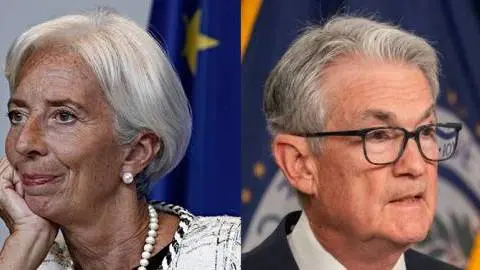Federal Reserve set for an extended pause
After 100bp of rate cuts the Fed has signalled it needs evidence of economic weakness and more subdued inflation prints to justify further policy loosening. President Trump’s low tax, light-touch regulation policies should be good news for growth, while immigration controls and trade tariffs provide upside risk for prices, suggesting we could have a long wait for the next cut
President Trump's policy thrust set to keep the Fed mildly hawkish
The December FOMC meeting saw a 25bp rate cut, as expected, but the accompanying press conference and forecast update indicated that 2025 would see a slower, more gradual series of interest rate cuts with perhaps just 50bp of easing in total. The economy has been performing well and inflation has proven to be stickier than expected so the general view was that there was less need to lower the policy rate as aggressively in 2025 as previously signalled.
In fact, the risk is that the Fed is actually more hawkish than they indicated. The convention has been that potential government policy changes aren’t typically factored into forecasts until they have been implemented. However, with President Trump having just won re-election and his policy plans differing so starkly from President Joe Biden’s, Fed Chair Jay Powell acknowledged that some felt the need to incorporate the potential policy shifts into their December 2024 projections ahead of time. However, not all did and since his inauguration, there has been little sign of any moderation in Trump’s key policy thrust.
Fed funds target rate mid-point and market expectations for the path forward (%). September 2024 versus latest pricing

Higher Treasury yields and dollar strength could yet force the Fed to cut
President Trump wants to ensure a low taxation environment with light touch regulation in order to boost growth prospects while implementing tariffs to improve US manufacturing competitiveness and promote re-shoring of economic activity. At the same time, trade protectionism will raise prices in the near term while immigration controls could prompt some labour shortages in sectors such as agriculture and construction that also add to inflation pressures. Consequently, Fed officials will likely need to see a marked slowdown in job creation and cooler inflation pressures to justify cutting rates further.
That means no change to monetary policy is a certainty on 29 January and it makes our previous call of a March rate cut look unlikely – currently just 6bp of a 25bp move is discounted by financial markets.
We are still forecasting three rate cuts for 2025 though. The jobs market is cooling and next month's annual benchmark revisions to non-farm payrolls could see significant cuts to the numbers originally reported. Wage pressures appear to be moderating quickly. At the same time, rapid increases in Treasury yields have pushed both consumer and corporate borrowing costs sharply higher and the dollar has strengthened more than 8% on a trade-weighted basis since September. This is all counteracting the Fed’s 2024 rate cuts and our worry is that US Treasury yields continue to rise on debt sustainability concerns – the US is still running a fiscal deficit of 7% of GDP – and this becomes an intensifying headwind for economic activity that also works to dampen inflation. Therefore we take the view that the Fed may need to push harder and cut rates a little further than currently priced by markets, but that is more likely to be a second half of 2025 development.
Rates: Some focus on reserve management is possible from this “no change” meeting
The minutes from the December meeting noted that usage of the overnight reverse repo facility remained on a declining trend, reflecting money market fund reallocation to Treasury bills and private-market repo, which offered slightly more attractive market rates. This occurred against a tightening in market repo conditions, and continued increases in net Treasury bill issuance. At that meeting, the Fed also reduced the rate it pays at the reverse repo window by 5bp, back to flat to the funds rate floor. This adds to the attraction of market repo, and should correlate with further falls in the use of the reverse repo window. Our view is that usage of the reverse repo window will ultimately fall towards zero, barring some temporary spikes around month end.
The Fed may or may not comment on the above. It will also be interesting to see whether the Fed comments on the resurrection of the debt ceiling since 2 January 2025. While it’s too early to expect a material market focus on it, the technical aspects of it are impactful. As long as the debt ceiling remains in place and the Treasury employs extraordinary measures to avoid breaching it, there is a tendency to spend down the cash balances that it holds at the Fed. As these get spent down, they add to reserves in the system which in turn acts to counter the tightening effect of the ongoing quantitative tightening (QT) programme. In effect, hitting the debt ceiling forces the Treasury to be a net supplier of liquidity to the system.
Despite these complications, the Fed may well lay the groundwork for ending QT at some point in 2025. This is the case as excess liquidity (which we define as bank reserves plus reverse repo balances) is likely to hit levels that the Fed would prefer not to go below from the middle of 2025 onwards, partly depending on how the debt ceiling saga evolves. The key number here is US$3tn for reserves, representing about 10% of GDP. We are currently at US$3.5tn. So we’re comfortable. At the same time, the reverse repo balance is running at US$125bn, and if that were to hit zero, then we’d hit some degree of tightness. That’s close, as QT is running at US$60bn per month. QT may have to end by mid-2025 based on a simple extrapolation of this.
The inflation-adjusted dollar is back to 1985 levels

Hard to see the FOMC hurting the dollar
December's FOMC meeting certainly added support to the dollar bull run and as James discusses above, it is hard to see the January FOMC event risk being read more dovishly for the Fed. True, market pricing of this year's Fed easing cycle is more modest than last December's 50bp median of Fed projections. Yet we doubt the Fed is ready to push back against those market expectations. This should keep dollar rate spreads relatively wide and argues that the FOMC will not be the reason the dollar corrects lower - if it does at all.
Instead, the FX market is enthralled by President Trump's incoming agenda and particularly by the harm to be meted out to major trading partners - especially those running large trade surpluses with the US. We're not sure the Fed will mention it in the January FOMC - and Chair Powell will be quick to refer any dollar questions to the US Treasury if he is asked - but the dollar is starting to look very strong now. Adjusted for inflation differentials it is back to 1985 levels - hence the speculation over some Plaza-like agreement to get it lower. We cannot see that happening this year, although Washington may try to find a way to get trading partners to strengthen their currencies under the threat of tariffs. Such a policy could just about be read as consistent with also wanting to maintain the dollar as the pre-eminent reserve currency.
For the time being, however, the narrative of US exceptionalism is alive and well, the tariff threat remains real and we doubt the Fed will knock the dollar off its perch.
This publication has been prepared by ING solely for information purposes irrespective of a particular user's means, financial situation or investment objectives. The information does not constitute investment recommendation, and nor is it investment, legal or tax advice or an offer or solicitation to purchase or sell any financial instrument. Read more
Download
Download article
23 January 2025
Our analysts’ views on this week’s central bank meetings This bundle contains 6 Articles




